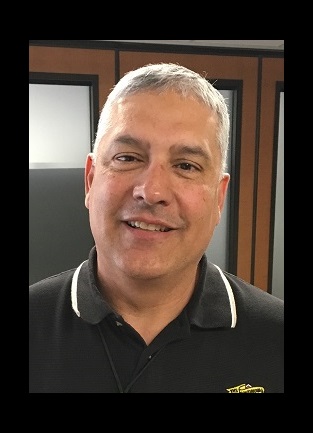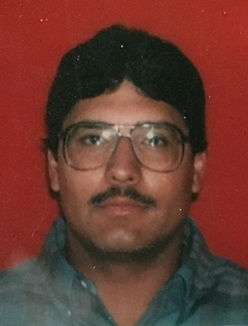René Garcia: Technology is going to be our friend

René Garcia accurately predicted the future, and the proof is on audiotape.
Thirty years ago, after the earthquake struck on Oct. 17, the young Caltrans civil engineer spent two weeks in the Bay Area as part of a visiting traffic management team from District 3. The team’s duties included placing changeable message signs around the region to alert motorists to roadwork, detours and the like.
On Dec. 19, 1989, while his office holiday party was wrapping up in Marysville, Garcia recounted some of his experiences in a Loma Prieta Oral history interview with questioner Lynne Horiuchi. Nineteen minutes into the 20-minute chat, she asks him what lessons were learned about worker communications during emergency responses.
“We found out that cellular phones are really handy,” he tells her. “I don’t know. In our district we have the mountains; I don’t know how good they would work in the Sierras or anything like that, but around the Valley and here, that’s a real valuable tool. I think we should invest in a lot of those.”
Needless to say, cell phones have come a long way since the late 1980s, when they were as big as bricks, cost a bundle and could be used only to make or receive calls. And Garcia is intimately aware of how communications technology has advanced, because in recent years he was the senior transportation engineer in the Emergency Management & Infrastructure Protection office within the Division of Maintenance.
His main job was to make sure every Caltrans district has what it needs to respond to emergencies. “Equipment, people, any kind of resources,” Garcia enumerated late last spring in his third-floor office at Caltrans Headquarters. “Whatever resources they need to fight the battle that they’re in at the time, we’re there to help them.”
During emergencies such as earthquakes and wildfires, he pointed out, “We have to open those roads as quickly and safely as possible because they are critical for anything – for response, for evacuation, you name it. … We’re not considered first responders, but we’re right there with them all the time.”
"When people are talking about an earthquake, they’ll refer to (Loma Prieta). It’s engrained forever. They will never forget that."
Often and generally without fanfare, Caltrans workers help those who are fleeing from disaster scenes such as the Oroville Dam scare of 2017 and the Camp Fire devastation of 2018. Wearing orange jackets and white helmets that in such moments might as well be halos, they tow and push vehicles, remove obstacles, point or lead the way to safety, even offer rides to disaster victims. “Whatever they need,” Garcia said.
Although Loma Prieta was a long time ago, Garcia said, for the department its legacy endures.
“Earthquakes are a big equation for us, because we’re always preparing for any kind of disaster, whether it’s man-made or natural,” he said. “And earthquakes, we do a lot of exercises. … When people are talking about an earthquake, they’ll refer to (Loma Prieta). It’s engrained forever. They will never forget that.”
Garcia, 58, concurs with what his 28-year-old self said about the power of earthquakes and how they can bring down big structures.
“Those things happen. I mean, nobody’s perfect. You just don’t mess with Mother Nature, you know,” Garcia says in the 1989 interview. “You can design whatever you want, with whatever specifications you want, but you’re no match for Mother Nature. That’s what it comes down to.”

Garcia was recruited by Caltrans when he was wrapping up his engineering degree at New Mexico State University. He grew up 225 miles southwest of Albuquerque in the tiny town of Bayard, N.M., where his mother still lives. He started in District 4 as a junior civil engineer, as part of a two-year rotation. A month before the earthquake, he transferred to a traffic operations job in District 3.
“When I did that (oral history) interview, back 30 years ago, I was still in somewhat of a culture shock,” Garcia recalled. “That’s why I left the Bay Area, right? It was just too much for me, coming from such a small place. Sacramento was still not as big as it is today, but it was smaller. So I thought I’d fit in better over here.”
He stayed in traffic operations for nine years, then worked in design for 12 years before transferring to emergency management nine years ago.
“Every day is different,” Garcia said. “I’ve enjoyed my work, and all the people. It’s been awesome.”
It’s natural that Garcia would be in a reflective mood when he was interviewed in May because he was a few weeks from retiring. His post-career plans include returning to his rural roots and visiting his mother in Bayard (population 2,185).
“It’s going to be hard to go back to a small place like that because all the, you know, everything, the Starbucks or whatever, they just don’t have that stuff,” Garcia said. “There’s literally nothing.”
With any luck, though, there will be decent cell phone service.

